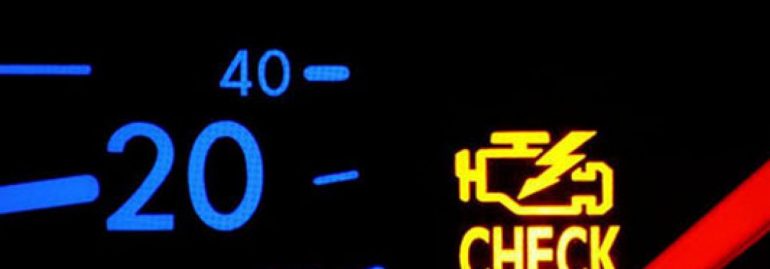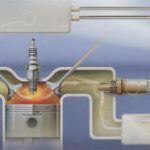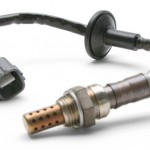You may be unsure of the importance of an OBD sensor and how to diagnose a car’s problem. There are many reasons why this device is essential for the health of your vehicle. These sensors help in determining the level of oil in the vehicle, as well as other important aspects of your car. Without an OBD sensor, your car will run at its worst. Here are some things to consider before you purchase an OBD scanner.
OBD2
If your car has a Check Engine Light, you should try an OBD2 scanner. You can purchase a good one for under $60 on Amazon. You need to plug it into your car’s OBD2 port and use the included Bluetooth technology to sync it with your smartphone. OBD2 scanners can read over 7,000 error codes and translate them into simple English for you. The following are some things to consider when purchasing an OBD2 scanner.
OBD2 software can display the diagnostic trouble codes, live vehicle sensors, and inspection/maintenance system test results. These data refresh at a rate of four to six Hz for older vehicles, but up to 16 Hz for more modern vehicles. The software can display up to 90 Pids of power train data. It can also automatically detect the COM port and factory-set baud rate, eliminating the need to configure the device manually.
The OBD-II protocol allows you to access diagnostic data from the engine control unit. It is a valuable source of troubleshooting information. The SAE J1979 standard defines the way to request this diagnostic data. It also specifies a list of standard parameters. These are known as PIDs (parameter identification numbers). While manufacturers are not required to implement all PIDs, they can implement custom PIDs that only they support.
OBD-I
The OBD-I sensor is a type of electronic device in the vehicle that allows the vehicle to receive data from the engine. There are many different types of OBD-I scanners available. They range from simple consumer-level devices to more sophisticated OEM dealership tools. Consumer-level devices include rugged hand-held scan tools. Some technicians may connect an auxiliary power source to the OBD-I port as well. These scanners are also commonly called OBD-I dongles.
The OBD-I sensor uses the same communication protocol as the CAN, LIN, and Flexray, which means that they communicate with each other. The OBD-II standard has 10 standard modes, but this is not sufficient to meet emission standards. Various other UDS modes were developed to enrich the available data. Vehicle manufacturers implement proprietary PIDs through these extra UDS modes. They are able to monitor their own engine performance, as well as the performance of their subsystems.
Modern OBD implementations utilize a standardized digital communications port to provide real-time data and diagnostic trouble codes. This data allows technicians to quickly identify malfunctions. However, the OBD-I port may not be compatible with all sensors. As with all diagnostic equipment, compatibility with the OBD port varies between devices. If you are having issues with your car’s OBD-I port, consider getting a specialized OBD-I sensor kit.
OBD-II
A vehicle’s on-board diagnostics (OBD) system helps mechanics diagnose complex emissions and driveability problems. This technology was introduced in the 1980s and has evolved quite a bit since then. The initial version of the system only alerted you to a problem using the MIL, or manifold information loop, and did not store any information about the problem. As vehicles and technology evolved, the number of sensors and stored information increased.
The OBD-II sensor also monitors evaporative emissions. It does this by applying pressure and a vacuum to the fuel tank and vapor lines. It checks to see if the rate of leakage is greater than the hole in the charcoal canister, a signal that the car is experiencing a problem. Whether or not this error has a detrimental effect on your car’s performance or driveability is another matter.
The OBD-II port is commonly found on cars and trucks. Vehicles with the OBD-II port can connect to a performance computer and determine horsepower, torque, 0-60 times, and other parameters. It can even provide a virtual tachometer for vehicles without an OEM tachometer. Vehicle-specific devices can also parse non-standard PIDs to determine boost pressure and engine load. The future of OBD-II technology lies in convergence.
OBD-II scan tool
Getting a good OBD-II scan tool can be a game changer. You can get the information you need without having to spend hours trying to diagnose your vehicle. Basic, budget models provide basic diagnostic information, and you can even translate the codes yourself. The high-end versions offer solutions and additional features to help you troubleshoot your car. However, they are more expensive and have a steeper learning curve.
Your car’s Emissions Control System and OBD-II system are constantly monitoring your engine performance, and if something goes wrong, it will signal a malfunction with the Check Engine Light. The Check Engine Light comes on when the emissions produced by your car exceed Federal EPA limits. To check whether your vehicle has problems, connect your OBD-II scan tool to the Diagnostic Link Connector (DLC). You can find this connector on the left side of the dashboard, near the steering wheel. The owners manual will contain information on where the DLC is located. If your car does not have a DLC, you may notice a message such as “searching for protocol”.
OBD-II scan tools are essential for diagnosing automotive problems. They can help you diagnose a wide range of issues, from engine diagnostics to vehicle maintenance. The Drive is an authority on automotive technology. Please read our Disclosure Policy carefully. This article contains affiliate links. The Drive earns commissions if you purchase the products recommended here. However, all opinions expressed in the article are those of the author. If you have a problem, don’t hesitate to consult an expert.
OBD Auto Doctor
If you’re looking for an advanced car diagnostic program, look no further than OBD Auto Doctor. This powerful tool communicates with the on-board diagnostic system in your vehicle, turning your computer or mobile device into an automotive scanner. With features such as check engine light reset and diagnostic trouble codes, OBD Auto Doctor is an essential tool for car owners. Here are some of the reasons you’ll want to download the program to your computer or mobile device.
OBD Auto Doctor connects to the OBD II port under your dashboard. To use this tool, make sure your Mac is in the “Run” position. When the computer is running, open the Apple ID window and click on “Settings.” Once you’ve done this, choose “Subscriptions” from the File menu. To use the app, click the Quick Connect button. The software will scan your car for any error codes.
OBD Auto Doctor is also compatible with a variety of car scanners. It works with Bluetooth or Wifi adapters, and can monitor your vehicle’s parameters in real time. The app will also allow you to download compiled data to your computer. If you’re on Android, try the app’s free Lite version first. You’ll find it easy to use. Moreover, OBD Auto Doctor will allow you to track your car’s parameters in real-time.
VAG-COM
The VAG-COM OBD scanner plugs into the OBD-II port under the dashboard. You can get a wireless one or a wired one, but either way, the scanner will start reading data as soon as you start your car. You can also use built-in programs to make graphs of data. You can learn how to use the VAG-COM scanner on a variety of vehicles by watching a video tutorial.
VAG-COM OBD software is easy to use and install. More car enthusiasts and professionals are using this software to diagnose their cars. Cars constantly create onboard diagnostic information. Every time you start a car, lines of code flow through the ECU. This information allows the car to diagnose its operation. Decades ago, the automotive industry agreed on a standard language for diagnostics. Now, it is easier to diagnose a car’s problems than ever.
OBD-II tools work with many brands of vehicles, including Audi and VW. VAG-COM, on the other hand, uses a proprietary protocol created by Volkswagen. Hence, VAG-COM is a popular choice among VW enthusiasts. Both OBD-II tools and VAG-COM scanners offer advantages over one another. VAG-COM scan tools are ideal for checking engine fault codes and simple modding.





